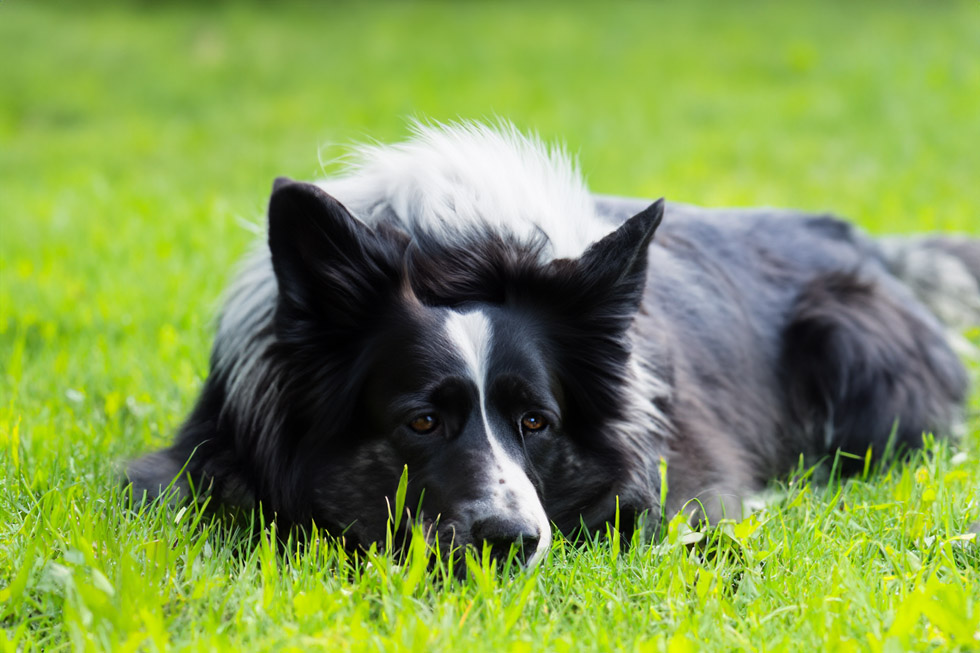
Spinal Disease in Dogs - IVDD
As the most common spinal disease in dogs, Intervertebral Disc Disease (IVDD) can cause intolerable pain for affected pets and significant costs to pet owners. With treatments ranging from $200 to an eye-watering $20,000+, pet owners must understand the breeds most at risk and take preventative measures to protect the spinal health of their beloved companion animal.
IVDD is a debilitating spinal condition that affects the cushion-like discs between the vertebrae, causing pain, weakness, and mobility issues in affected dogs.
“IVDD develops when the discs between the vertebrae undergo degeneration or herniate, leading to the compression of the spinal cord or nerves,” Nadia Crighton from Pet Insurance Australia says. “The condition is more prevalent in certain breeds and can cause severe consequences if left untreated.”
Symptoms of Intervertebral Disc Disease (IVDD)
Symptoms of IVDD may vary depending on the location and severity of the affected disc.
“It is important for dog owners to understand that if they observe any symptoms, early diagnosis and treatment from your local veterinarian is paramount,” Crighton recommends. “Early intervention has been shown to improve the chances of a good recovery significantly.”
- Back pain.
- Reluctance to jump, exercise, or climb stairs.
- Stiffness.
- Hunched posture.
- Weakness in legs.
- Loss of coordination.
- Lameness.
- Changes in behaviour.
Treatments for Intervertebral Disc Disease (IVDD)
When it comes to treating Intervertebral Disc Disease (IVDD) in dogs, the approach can be diverse, depending on the severity of the condition. Typically, two primary methods are employed to manage IVDD: non-surgical treatment and surgical intervention.
“ The choice of treatment recommended by your veterinarian hinges on various factors,” she says. “These include your pet’s overall health, the gravity of symptoms displayed, and the specific location and type of disc herniation.”
For some pet owners, the prospect of IVDD treatment can be daunting, both emotionally and financially.
“Specialised surgical procedures, in particular, can come with a considerably high cost. However, it is essential for pet owners to understand that timely and appropriate intervention can greatly impact the outcome of the treatment and significantly improve the chances of a successful recovery for their beloved companions.”
Treatment can include:
- Restricted activity
- Medication
- Physical therapy
- Weight management
- Surgical intervention
“It is vital that pet owners seek immediate veterinary advice if their dog is showing any signs of IVDD, as early diagnosis and treatment can significantly impact the success of recovery,” Crighton says. “The prognosis for dogs with IVDD can vary widely, depending on the extent of spinal cord damage and the timeliness and effectiveness of the chosen treatment.”
“We understand the emotional bond between pets and their owners, and we are committed to helping families provide the best care for their beloved dogs,” Crighton says. “IVDD is a condition that we know is causing a lot of stress and worry for pet owners; education around this disease is paramount for pet lovers.”
With a strong dedication to promoting responsible pet ownership, Pet Insurance Australia actively promotes preventive measures aimed at reducing the risk of Intervertebral Disc Disease (IVDD) and other prevalent dog ailments. They also recommend owners prioritise regular veterinary check-ups for their dogs.
“These check-ups not only help detect any potential health issues early on but also enable timely interventions and appropriate treatments, if necessary,” Crighton says. “Also maintaining a healthy weight is crucial in minimising the risk of IVDD and other health problems.”
Pet owners are encouraged to provide a balanced diet and ensure their dogs get the appropriate amount of exercise. A healthy weight reduces strain on the spine and promotes overall vitality and longevity.
Pet Insurance Australia aims to empower pet owners to proactively safeguard their furry companions’ health and happiness, fostering a stronger and healthier bond between dogs and their owners.
“Age onset for IVDD tends to peak around the four- and five-year mark. However, we see many dogs succumbing to IVDD much later in life,” Crighton says. “Interestingly, many dog enthusiasts think IVDD is only a smaller dog issue. However, our statistics suggest it can affect much larger breeds.”
Top 10 Breeds Affected by IVDD *
- Dachshund
- French Bulldog Mix
- Weimaraner
- French Bulldog
- Beagle
- Dobermann
- Great Dane
- Australian Silky Terrier Cross
- Airedale Terrier
- Cavalier King Charles Spaniel
* Pet Insurance Australia data, FY2023
Nadia Crighton is a renowned and accomplished professional in the fields of Journalism, Public Relations, and Writing, with an extensive career spanning over 25 years, 20 of which have been dedicated to promoting the health and well-being of pets.
Get the latest Pet Insider Tips & News
We offer award-winning* pet insurance policies to protect your furry friend’s health and wellbeing. Get a quote today and give your pets the care they deserve.
Archives
Categories
- Cat Care (64)
- Cats (1)
- Dog Care (124)
- Guides (28)
- Health and Nutrition (200)
- Lifestyle and Activities (219)
- Media Release (24)
- Pet Care (246)
- Rescue Dogs (1)


